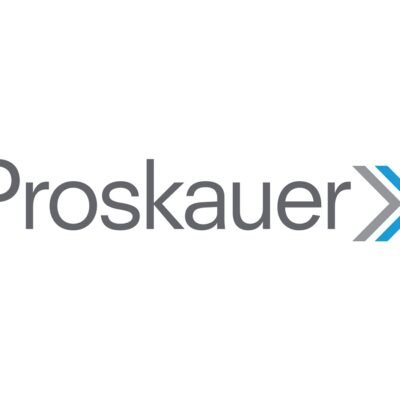An exclusive interview with BNY Investments’ Paul Flood
For many investors approaching or in retirement, getting a high yield from a multi-asset fund might sound appealing. But, as Paul Flood, Head of Mixed Assets Investment at Newton (part of BNY Investments), is keen to stress, it’s not the headline figure for that yield that counts. What really matters is the income that investors actually receive. In this exclusive interview, Flood talks to IFA Magazine’s Sue Whitbread as he outlines how the BNY Mellon Multi-Asset Income Fund (MAIF), which he has managed since launch in 2015, is built to help advisers deliver just that – a sustainable, regular income that clients can rely on and which grows over time.
Putting real income at the heart of retirement portfolios
Unlike traditional income strategies that target high yields, MAIF’s approach centres on delivering a stable, usable income stream – it’s about pounds in pockets, not just numbers on a factsheet.
For clients moving from an accumulation strategy to decumulation, the fund has particular appeal. Flood’s enthusiasm for it is infectious as he explains “Our focus is on delivering a stable and growing income. It’s less about the yield of the fund itself – which fluctuates with market prices – and more about what clients actually receive. That means monthly income that mirrors the salary they were used to before retirement, helping them live within their means and plan ahead with more confidence.”
MAIF pays out 12 fixed monthly instalments across the year, with a bonus payment at the end – much like a salary-plus-bonus model. “It’s designed around real-world spending patterns,” he explains. “Most clients’ bills don’t come quarterly or annually – they’re monthly. That’s how people budget. And it’s much easier for advisers to plan when they know exactly what’s coming in and when.”
Why the structure of income delivery matters
This carefully packaged approach to delivering income is more than just client-friendly – it’s a significant planning advantage for advisers too, working really well within the cash-flow modelling process.
“We model the income at the start of each year,” says Flood. “That lets us forecast the 12 monthly payments with confidence, then we add the final bonus payment – which has typically been between 15% and 25% of total income. It involves us working closely with our fund accounting team to assess the level of income we can pay, bearing in mind what we’ve paid in previous years. This also helps to simplify the administration of income as the adviser knows what their client is getting and can plan accordingly – from SIPP withdrawals to ISA income flows and fees.”
It also helps the adviser in terms of the overarching investment strategy they create for a client. As Flood says “Because they know what income the fund is paying each month, advisers can plan for how much they need to invest in order to generate the level of income which a particular client might require.”
Flood is clear that the goal is to avoid volatile income or the need for having large cash buffers in client portfolios. “With the regular income MAIF provides, advisers don’t need to hold such a large proportion of a client’s portfolio in cash. That capital can be invested, working harder for the client while still meeting their income needs.”
Multi-asset allocation done differently
What allows MAIF to deliver this level of income consistency? Flood points to the fund’s directly invested, actively managed multi-asset structure.
“Income availability and the level of it varies dramatically between asset classes – and throughout the economic cycle,” he notes. “Right now, for instance, we’re leaning into areas like bonds and alternatives which are offering stronger yields. That allows us to free up capital to invest in lower yielding equities or other assets where we see potential for income and capital growth down the line and have less reliance on higher yielding equities.”
Crucially, this asset allocation is overseen centrally by one investment team – not divided between different fund managers or asset class silos.
“Direct investment is essential,” Flood says. “It means every security is selected for its contribution to the fund’s three key goals – which are delivering reliable income, growing that income, and achieving capital growth. And it means we can more readily balance risk across the portfolio too. In a fund-of-funds or model portfolio, you often lose that cohesion and control over risk exposure.”
Flexibility across the cycle: adapting to market realities
The income landscape has shifted dramatically over the last few years, from near-zero bond yields post-2008 to far more attractive opportunities today. MAIF’s flexibility has allowed it to handle these changes adeptly.
“In the low-yield era, we had minimal exposure to government bonds because they just didn’t meet income needs never mind total returns,” Flood explains. “That meant when bond markets sold off in 2022 and 2023, we were well-positioned. Subsequently we were able to rotate into bonds at much more attractive yields.”
Today, the fund has increased allocations to real assets – around 22% of the portfolio – which are doing “a lot of the heavy lifting” on the income front, contributing around 35% of the fund’s total income. “These assets – think infrastructure, real estate, regulated utilities – offer inflation-linked dividends and are currently trading at attractive valuations. That makes them doubly attractive.”
Balancing today’s income with tomorrow’s growth
One of the key challenges investors face with natural income strategies is ensuring that the income today doesn’t come at the expense of tomorrow’s returns. That’s something Flood is acutely aware of.
“To grow the income over time, you need to grow the capital base,” he says. “If you’re paying out too much, you erode your ability to generate income in the future. That’s why our fund is designed to strike a balance – income now, but with the capital growth needed to maintain and increase that income. We’re pragmatic investors, focused on our objectives and delivering for clients. MAIF has a decade long history doing this and continues to attract advisers’ attention.”
Equities play a key role here, not just for capital growth but for their ability to deliver rising dividends – and thereby income – over time. “Dividends grow, unlike bond coupons,” Flood notes. “So when the timing is right, we’ll increase equity exposure to drive income growth. It’s all about getting that balance right throughout the cycle.”
A structured, disciplined yield target
As at April 2025, MAIF’s historic gross yield stands at 4.45%* – but unlike funds that chase a fixed yield regardless of market conditions, the fund’s target is flexible and realistic. “We’ve tied our minimum yield to a 30% premium over a traditional 60/40 portfolio,” explains Flood. “That means if bond yields rise, our yield target rises too – so we remain attractive. But it also ensures we’re not overreaching, which could compromise the fund’s sustainability.”
The emphasis for us is on deliverability, not just optics. “A decade ago, bond yields were close to zero – something which had a material impact on the level of income that multi-asset funds generally were able to deliver. We have to be pragmatic. We want to offer something that is attractive but remains achievable and resilient.”
Supporting advisers in delivering better retirement outcomes
For advisers, MAIF’s design ticks multiple boxes: sustainable income, long-term capital growth potential, and administrative simplicity.
“We think of our role as enabling advisers,” says Flood. “They know their clients. They’re making the key decisions about how much income to take, when to draw capital, or when to pass assets on. What we can do is put them in the best position to make those decisions with confidence.”
The predictability and shape of the income stream helps too. “Clients are used to monthly paydays. Giving them that same rhythm in retirement makes the transition easier – and gives advisers a clear story to tell.” Importantly, the FCA’s Thematic Review of retirement income advice highlighted the importance of considering a client’s capacity for loss – not just of capital, but of income too. As Flood points out: “MAIF is designed to help address that need by providing confidence in the sustainability and predictability of income. It also supports advisers in meeting regulatory expectations. The feedback we’ve had is that many advisers hadn’t been focusing on this aspect – but it’s now a key priority, particularly as they recognise the regulator is paying close attention.”
Positioning for the next decade
Looking ahead, Flood believes the natural income approach will become even more important – not less. “People are living longer, markets are more complex, and there’s more responsibility on individuals to fund their own retirement,” he says. “Natural income, done well, gives clients the clarity and confidence they need.”
This approach has positioned MAIF as a product that advisers can confidently recommend, knowing that its structure supports both current income needs and future growth.
And with its long-term track record, diversified sources of income and in the underlying asset allocation structure, MAIF is well set to continue its position as a leader amongst today’s multi-asset solutions.
“This fund was built from the ground up to meet the real-world needs of investors,” concludes Flood. “We’re not just chasing numbers. We’re delivering outcomes. And for advisers trying to solve the retirement income puzzle, we think that makes all the difference.”
*Source BNY Investments
Click here to learn more about BNY Investments
About Paul Flood


Paul is Head of Mixed Assets Investment at Newton (part of BNY Investments). He is also lead manager of Newton Multi-Asset Diversified Return strategy, the Newton Multi-Asset Income strategy and the Newton Multi-Asset Growth strategy. He also provides leadership and analysis on asset allocation, derivatives and convertible bonds for the wider firm, having spent the earlier part of his career working on strategic asset allocation and derivative strategy.
Paul is responsible for generating ideas within alternative assets and has been leading in this area since 2008. He is a member of the macro allocation group and provides feedback to the wider house on strategic and tactical asset allocation. Paul joined Newton in 2004. He is a CFA1 charterholder and has completed the certificate in quantitative finance (CQF) after passing with distinction. Paul studied Astrophysics at the University of St Andrews and is a keen cyclist and runner, having recently cycled the length of the UK from Land’s End to John O’Groats and often participates in marathons.
Joined Newton: 2004
Joined industry: 2004
1CFA® and Chartered Financial Analyst® are registered trademarks owned by CFA Institute.
Click here to learn more about BNY Investments


Access the 2025 Multi-asset Fund Insights Report here





